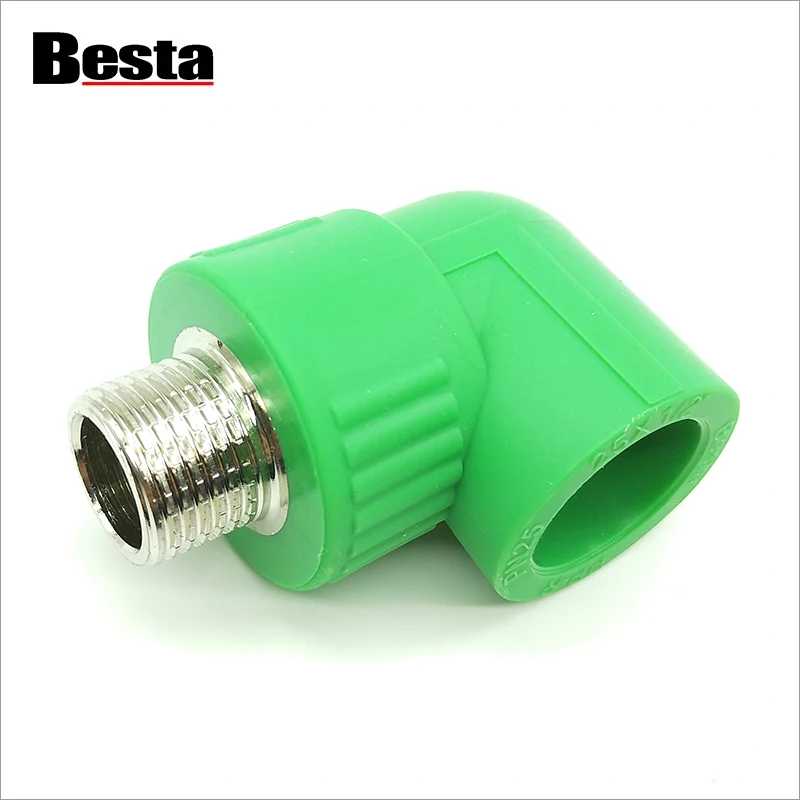- English
- Español
- Português
- русский
- Français
- 日本語
- Deutsch
- tiếng Việt
- Italiano
- Nederlands
- ภาษาไทย
- Polski
- 한국어
- Svenska
- magyar
- Malay
- বাংলা ভাষার
- Dansk
- Suomi
- हिन्दी
- Pilipino
- Türkçe
- Gaeilge
- العربية
- Indonesia
- Norsk
- تمل
- český
- ελληνικά
- український
- Javanese
- فارسی
- தமிழ்
- తెలుగు
- नेपाली
- Burmese
- български
- ລາວ
- Latine
- Қазақша
- Euskal
- Azərbaycan
- Slovenský jazyk
- Македонски
- Lietuvos
- Eesti Keel
- Română
- Slovenski
- मराठी
- Srpski језик
How Do You Connect a PPR Insert Fitting to a Brass Thread
2025-09-19
As a plumbing specialist with over two decades of experience, I’ve handled countless pipe connections—some straightforward, others tricky. One question I often hear is: how do you reliably connect a PPR pipe to a brass threaded system? It’s a common challenge, especially in mixed-material plumbing projects. If done incorrectly, you risk leaks, pressure loss, or even system failure. Today, I’ll walk you through a step-by-step guide and show how the right PPR Insert Fitting can make this connection secure and effortless.
What Do You Need for a Successful Connection
First, let’s talk about the essentials. You can’t just force two different materials together—you need the right components and tools. For connecting a PPR pipe to a brass thread, you will need:
-
A high-quality PPR Insert Fitting with a brass threaded end
-
PPR pipe cutter
-
Heat-resistant welding machine (for fusion)
-
Teflon tape or liquid thread sealant
-
Calibration tool and deburring knife
Using subpar fittings is a common mistake. That’s why at Besta, we design our products to eliminate guesswork and ensure durability.
Why Use a Specialized PPR Insert Fitting
Not all fittings are created equal. A good PPR Insert Fitting meant for brass threading must have:
-
Precision-machined brass threads for a tight seal
-
A PPR side compatible with fusion welding
-
Corrosion-resistant materials for long-term use
The Besta Hybrid Connector is engineered specifically for this purpose. Its threaded brass end is thick-walled and reinforced, while the PPR side allows seamless thermal fusion with PPR pipes. This design prevents leaks caused by material mismatch.
What Are the Technical Specifications of the Besta Hybrid Fitting
Here’s a detailed breakdown of the Besta PPR-Brass Insert Fitting:
| Feature | Specification |
|---|---|
| Material | PPR (Random Copolymer) + DZR Brass |
| Thread Type | BSPT (G) or NPT |
| Pressure Rating | 10 Bar (Cold) / 6 Bar (Hot) |
| Temperature Range | -10°C to 95°C |
| Sizes Available | 20mm, 25mm, 32mm |
| Standards | ISO 9001, NSF/ANSI 61 |
This PPR Insert Fitting is designed for high-pressure environments and is resistant to corrosion and scaling—a must for potable water systems.
How Do You Connect It Step by Step
Let’s get practical. Here’s how I do it:
-
Cut the PPR pipe cleanly using a pipe cutter and deburr the edges.
-
Preheat the welding machine to 260°C.
-
Simultaneously heat the PPR Insert Fitting and the pipe end for the recommended time (see our manual).
-
Quickly join the two parts while hot and hold firmly for a few seconds—no twisting.
-
Wrap the brass male thread with Teflon tape (clockwise) or apply liquid sealant.
-
Screw the fitting into the brass female thread by hand first, then use a wrench—but avoid over-tightening.
The key is using a fitting like Besta’s that ensures the PPR and brass components are perfectly mated. This avoids stress cracks and leaks.
What If You Face Common Issues Like Leaks or Thread Damage
Even with care, issues can arise. Cross-threading is a frequent problem. If you feel resistance, unscrew and restart. Never force it. For leaks, check if the Teflon tape is applied evenly or if the fusion joint was overheated.
A well-manufactured PPR Insert Fitting minimizes these risks. Besta fittings come with pre-applied thread guides in some sizes to prevent cross-threading.
Who Should Use the Besta PPR-Brass Fitting
This solution is ideal for:
-
DIY enthusiasts looking for a reliable mix-material connection
-
Professional plumbers working on residential or commercial systems
-
Projects involving connections to boilers, pumps, or existing brass valves
Our PPR Insert Fitting is versatile and built to last, making it a go-to for many of my projects.
Where Can You Learn More or Purchase Besta Fittings
If you’re tackling a plumbing project and need a dependable connection between PPR and brass, don’t compromise. Use Besta products for peace of mind. We stand by the quality of our PPR Insert Fitting range with full certification and customer support.
Contact us today for technical datasheets, wholesale inquiries, or expert advice. Let’s build systems that last—together.





